Pit of Despair
Crawling out of December with help from Austin Kleon
December is dark. I drive to school on these cold mornings in the dark. The honeymoon has ended. The first semester is coming to a close. My students and I have fallen into our routines; everyone knows the expectations. There is consistency, but also boredom. Students begin to push academic and behavior boundaries. More often than not, it is too cold for students to go outside for recess, so we are inside all day. The days are short, but the school day feels long. I drive home in the dark, exhausted. The weekend seems so far away, and there are still three weeks until Winter Break.
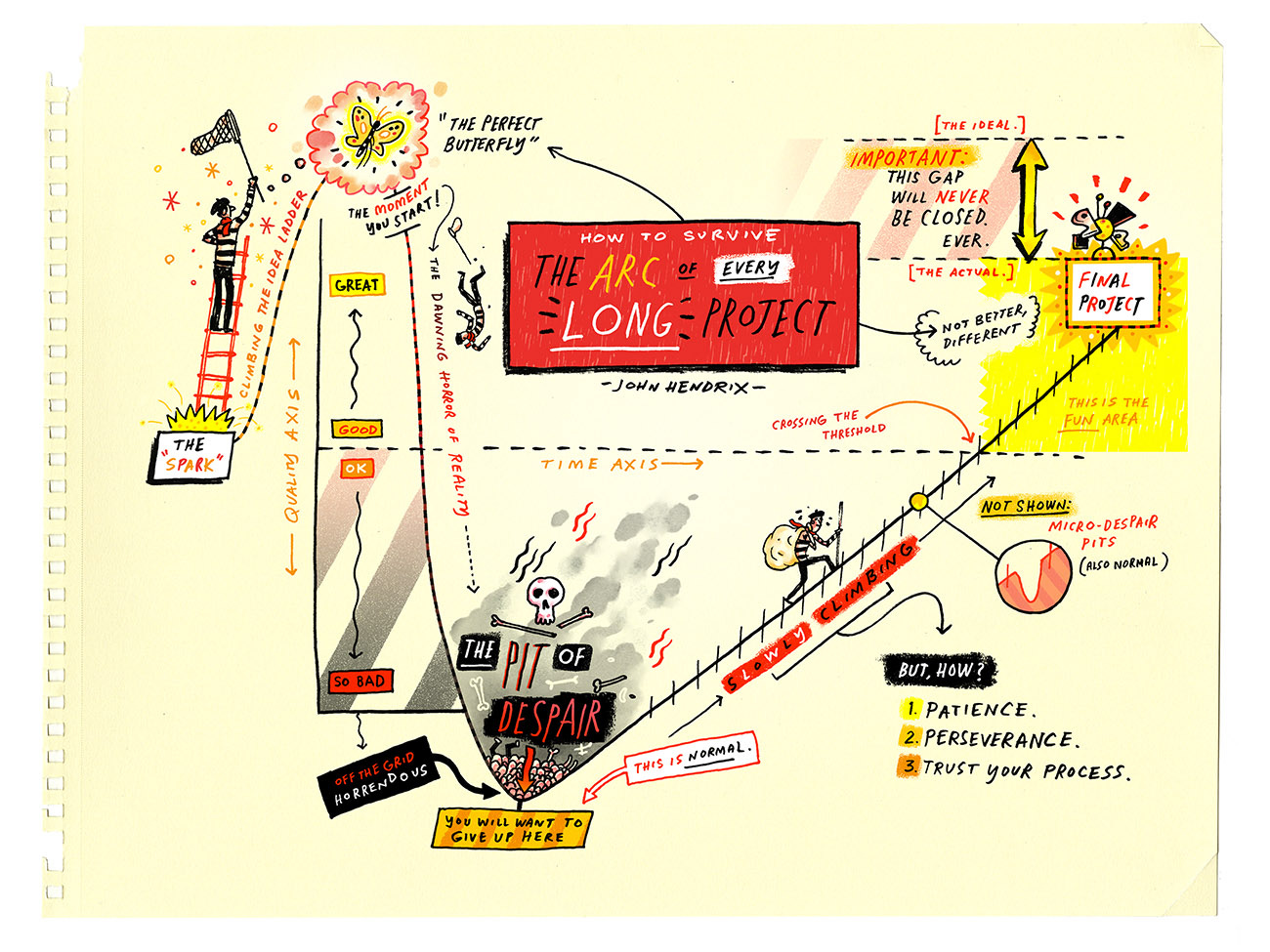
I’ve been here before. Many times. It’s at this point in the school year where I begin to worry that the quality of my teaching is slipping. I’m tired. Students are tired. Every day there is a staff meeting or a team meeting or a data meeting. The grind continues.
The arc of a school year mirrors the arc of any creative project, from writing a book to launching a startup. There is the initial spark of a new school year: fresh school supplies and outfits. Lessons are full of enthusiasm; each day brims with possibility. Everyone is on their best behavior as we all chase John Hendrix’s “Perfect Butterfly.”
Inevitably, lessons begin to fail. Something you planned for all weekend falls flat. Students are either confused or disinterested or both. Some years, students seem to misbehave constantly. Nothing you do seems to work, as you try to keep teaching.
Keep Going
At this point in the year I pull out
’s book Keep Going.1 I may not identify as a creative artist, but as a teacher-designer, I believe we are all creative. Designing learning experiences requires creativity and patience and perseverance. Teaching is a creative pursuit that requires dedication and vulnerability. Kleon’s creative advice helps me stay true to myself while I crawl out of these low December moments.Every day is Groundhog Day.
Teaching and learning are not linear. No matter how long I’ve been teaching, some days I still feel very much like a novice. Sure, I may be more confident in my pedagogical values, but the journey of teaching and learning means that I will never arrive at the end. Every day, students ask me What’s next? Sometimes I know how to answer their questions, other times, I lean into the messy process of the experience, and see where it leads us.
This is why the weeks can seem to drag on and breaks from school feel like a wonderful boon. I teach without an end in sight. Whenever I begin to feel overwhelmed, like I’m burning out, I try to remember that everyday is Groundhog Day2. I focus on each day as it comes, do the best I can, and leave my stressors at school before coming home.
Build a bliss station.
One of the most defining parts of my learning experiences is my classroom. I take great pride in creating a learning environment where students can feel safe and welcome and ready to learn. We spend a lot of time together, and I want students to walk in knowing that my classroom will be different. My classroom is my bliss station.3
Kleon borrows the concept of a bliss station from Joseph Campbell’s The Power of Myth.
You must have a room, or a certain hour or so a day, where you don’t know what was in the newspapers that morning, you don’t know who your friends are, you don’t know what you owe anybody, you don’t know what anybody owes to you. This is a place where you can simply experience and bring forth what you are and what you might be. This is the place of creative incubation. At first you may find that nothing happens there. But if you have a sacred place and use it, something eventually will happen.
I’ve decided to share my bliss station with my students because I want our learning environment to be a place where we can incubate curiosity. The best compliment I’ve ever received is that my classroom feels like a big hug from me. My classroom is a sacred place where I push students to think in ways that differ from previous grades. My students know that when they cross the threshold of my classroom door, they are entering a learning environment where they can make mistakes, be human, and Mr. Neibauer will advocate for them no matter what. I will push them and love them.
Forget the noun, do the verb.
So much of what I do in my classroom is deprogramming my students. They come to me with labels and fixed mindsets about who they are, resigned to be a certain type of student. Sometimes they say them aloud: I’m not a math person. I not a reader. I’m not a writer. More often, though, they’ve internalized these labels so much that they’ve become part of their unspoken identity: I’m a behavior problem. I’m a bad student. I’m not worthy of love. Kleon’s advice, quoted from R. Buckminster Fuller’s classic, I Seem To Be A Verb, applies to teaching and learning. Both are processes. Every day is a chance to learn; even if that learning is difficult. I may not understand fractions, yet, but I will at some point. I may not be good at writing, yet, but I will if I keep writing. That’s the power of yet. We do the verb, we get feedback, and we continue to grow.
Make gifts.
Community is a strong value of mine. I believe in the importance of building strong relationships in order to strengthen those around us. This requires a spirit of generosity. This is what I mean when I say that I’m continually working to create a classroom of abundance. I want my students to know that although public education is built around scarcity (i.e.: time, resources, grades), in our classroom, we are generous with each other, and work to give everyone what they need to be successful. We give each other second chances and the benefit of the doubt. I believe that these acts of generosity are contagious and lead to a classroom community filled with gratitude. One way we show gratitude is by making Gratitude Zines. I’ve done these with my students every year and they are great for giving to parents and other teachers. I’ve even had students make zines for learning projects!
One of my favorite writing experiences comes from
’s book, The Writer’s Practice.4 Students volunteer to do something they have never done before and then write about the experience using sensory details to bring the adventure to life. The depth at which students write about their acts of service never ceases to astound me.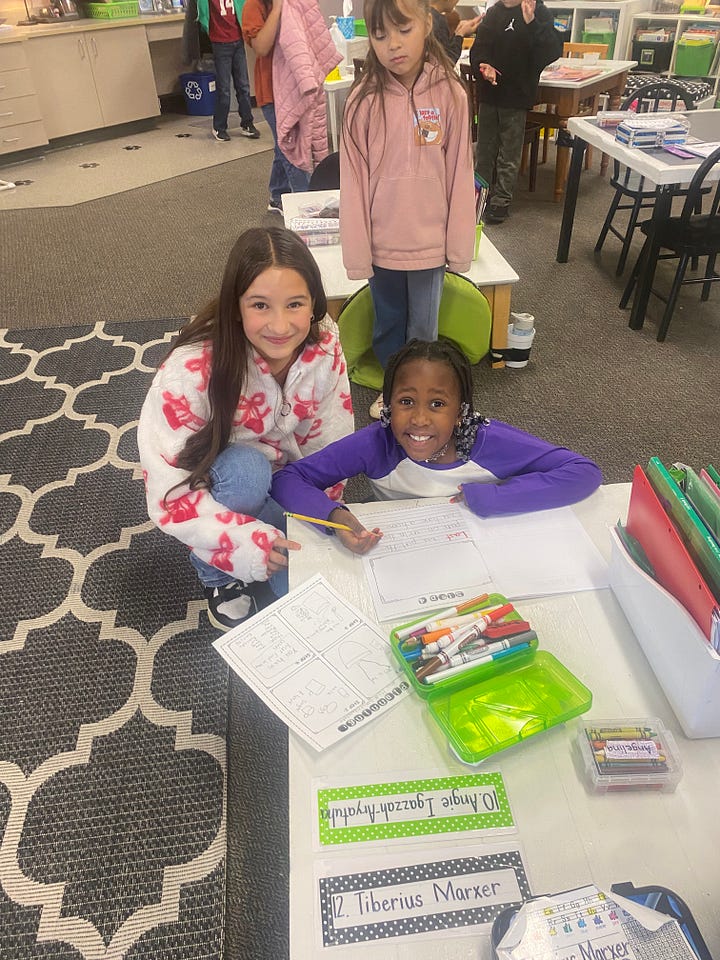
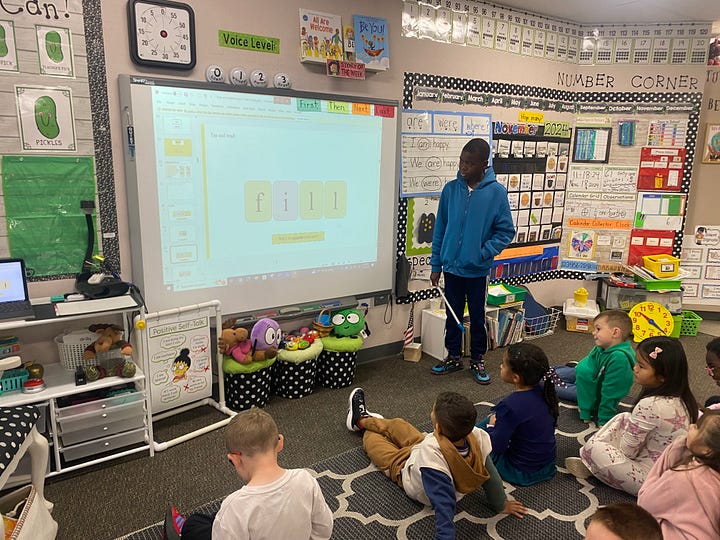
The ordinary + extra attention = the extraordinary
Student attention is the most sought after thing in every classroom. It’s getting more challenging to get students’ attention, especially post pandemic. Their ability to be socially present in school requires practice. Years of instant notifications and gratification have atrophied students’ ability to control how they attend to others. Kleon quotes Corita Kent, Everything you need to make extraordinary work is in your ordinary life; you just have to pay attention to it. I love the story of a journalist who visits Kent and learns how she is watching a maple tree throughout the seasons.
I admit that this is quite a challenge with fifth-graders in 2024. There are so many distractions and it is difficult for my students to attune to any one thing. The concept of attunement comes from attachment theory between a parent and an infant. Parents are able to use their senses to notice and meet their child’s needs by paying close attention to facial expressions, movements, sounds, and other non-verbal cues. While it is near impossible for me to attune to 30 students’ facial expressions, when I slow down and see my students as human beings, I often notice subtleties that help me enhance our learning experiences. For example, when I am floating around my classroom, working with small groups, I often can pick up discouragement before it turns into something greater. When I see two students off task, I have learned how to tell the difference between needing help or not being engaged out of boredom. The challenge becomes how to teach my students to attune to each others’ needs. There are 30 of them and only one of me. I want them to help each other grow academically.
Art is for life. Slay the Art Monsters.
This piece of advice is very specific to artists. My takeaway for my students is to model for them intellectual humility. If public education had a more humanistic foundation, academic learning would foster authentic connections. Teachers and students would share their intellectualism toward the common goal of promoting a shared intellectual life, not just passing a test. Intellectual humility helps students recognize that their understanding of a concept may be incorrect. I want my students to be open to other people’s views, and to stay curious about their assumptions. Humility is an important skill that I try to model every day. For some students, always doing well in school can create an ego that is not helpful to our classroom community, so we often discuss how to be confident in one’s abilities while also being helpful.
You’re allowed to change your mind.
Alan Jacobs writes in How To Think, “if you learn to think, genuinely to think, you will sometimes change your mind.” This is simple for me to model. I make mistakes all the time. In my classroom, I use the acronym F.A.I.L. (First Attempt in Learning) with students as a way for them to understand the importance of failing forward. There is no shame is thinking one thing, learning more about something, and then changing your views. Afterall, that is the process of learning. We are constantly evolving.
When in doubt, tidy up.
Every Friday, we spend about 30 minutes cleaning our classroom for the upcoming week. I change the seating arrangement weekly, so students sit and work with a variety of students. We also use Fridays to meet as a class to discuss our week and how we can improve for the next week. I often use I Like, I Wish, What If? from Creative Acts for Curious People by Sarah Stein Greenberg. It is a great protocol for tidying up our learning space so that every week we are starting with a fresh room and fresh ideas.
I tend to tidy up at home when I’m in need of some inspiration. You will often find me on a Sunday dusting and vacuuming before writing and planning for the week. There is nothing like the feeling of writing at a straightened and organized desk!5
Demons hate fresh air.
Five years ago, I began taking my students on a walk around the school building every day at the same time. It gave us a chance to get fresh air, play some music, and eat our snacks. Over the years, I’ve noticed that this extra movement helps my better students regulate their emotions and creates another space for me to connect with them individually. I take song requests, connect my phone to my fanny pack speakers, and we walk for 1-2 songs. In this time, I’ve helped students resolve conflicts, learned about my students’ lives outside of school, and even explained some tricky concepts. Walking and talking lightens moods, lowers stress, and improves learning.
Plant your garden.
There are so many gardening metaphors in public education that they run the risk of becoming trite. However, Kleon offers a nuanced twist that resonates with me. Teaching is about trying stuff and seeing what works over time. I run a lot of learning experiments in my classroom. I collect feedback on what's working and tweak things that don’t work for me or my students. I find that the best professional learning comes from trial and error, not standardized curricula. Yes, there are billions of dollars spent on creating research-based materials so that teachers don’t have to create everything from scratch, but learning is messy and I’d rather learn what works with my students by actually working with my students instead of reading from a script. I can’t learn to garden from a book (or improve my pedagogy) without getting my hands dirty.
Bonus! Spend time time on something that will outlast them.
Teaching is the ultimate act of delayed gratification. We labor and hope that one day our teaching will positively impact our students. As much as I work to change public education for the better, the chances of seeing the fruits of my labor are very small. I may never know how a particular writing lesson impacts a specific student. Will they remember what we did in class when they are 40 years old? All I can do is spend time building relationships with my students because that is what matters more than learning. Positive relationships will outlast whatever curriculum is en vogue. So, I will continue to teach and do my best to because that is a reward in of itself (even though it would be nice to be adequately compensated as a learned professional).
On these short December days that seem to last forever, it is important that we remind ourselves that feeling low is a normal human experience. Especially in teaching, there are many times when we feel burned out and ready to quit (there is usually another low point for me in April). But when I look at John Hendrix’s illustration, I’m reminded that the slow climb to spring requires patience, perseverance, and trusting the processes I have put into place to create a positive learning environment for my students. My classroom will never be perfect; every year will have different challenges, and knowing this makes me feel a bit better.
’s writing has been a great companion when I’m feeling low. Hopefully, these tips will help you get to the other side of your December Pit of Despair.Have a great week!
—Adrian
Resources
Whenever I feel like fixed mindsets are beginning to dominate our learning, I show this video by Trevor Muir. It’s awesome! He even has some great posters you can print out for your classroom.
The Unmistakable Creative Podcast Austin Kleon | How to Keep Going When You're Tempted to Quit
On this episode, Kleon discusses each of his ten chapters from Keep Going. I love hearing his passion and stories behind the ideas.
How Humility Can Make Your Students the Best People Ever
This article published by the Greater Good Science Center (GGSC) at the University of California, Berkeley offers very actionable tips to cultivate intellectual humility with students.
This video shows the Walk, Talk, Decide strategy for student discussions. These students may be older, but I’ve used this multiple times in various contexts with my fifth-graders.
Wintering: The Power of Rest and Retreat in Difficult Times by
Katherine May is another wonderful writer who has helped me reframe these low moments throughout the school year. I highly recommend you subscribe to her Substack and read Wintering.
Hopefully, your low point isn’t this bad!
I also have a bliss station at home where I drink tea, read books, and write.
I realize that I may be alone on this one. Many creatives out there thrive at a messy desk.


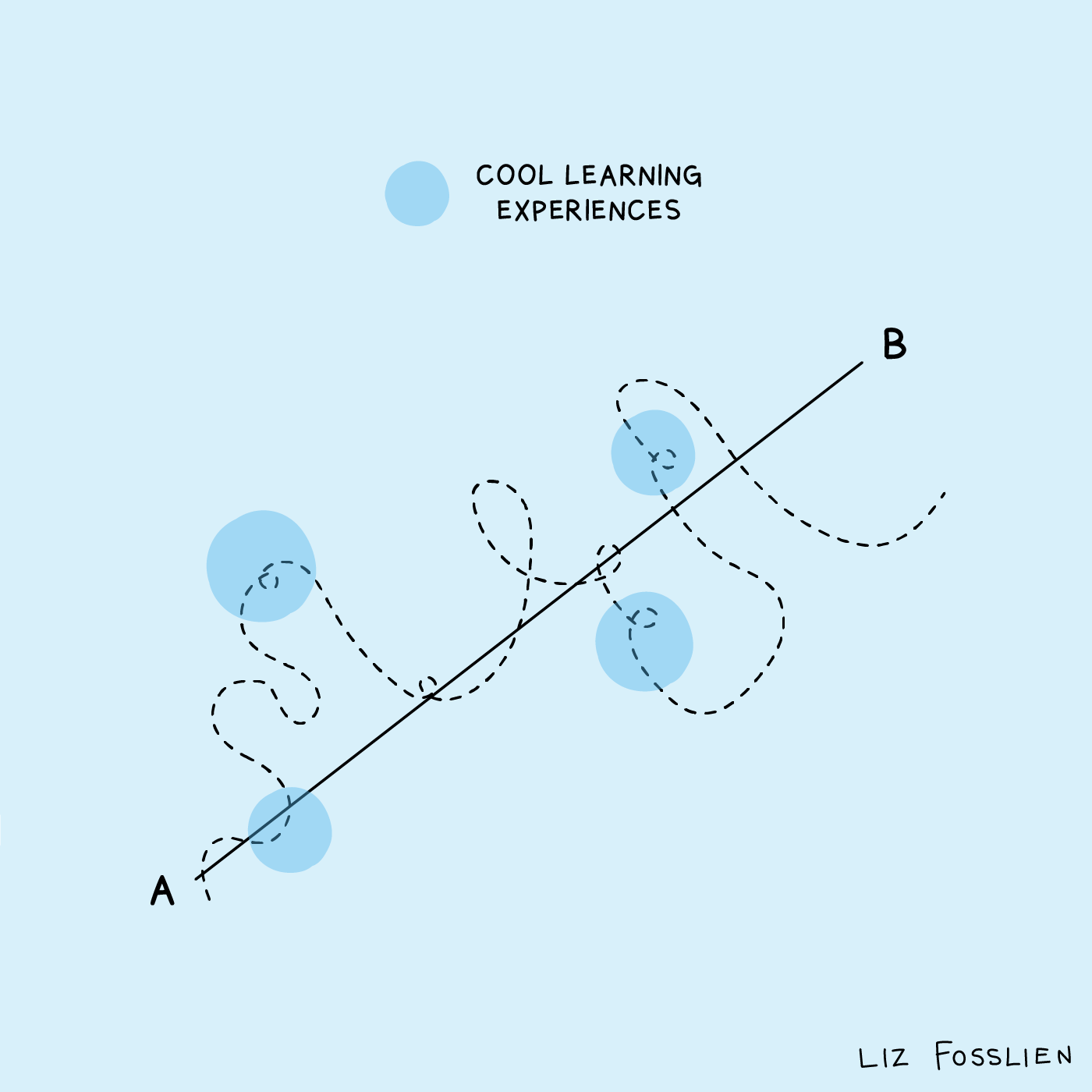
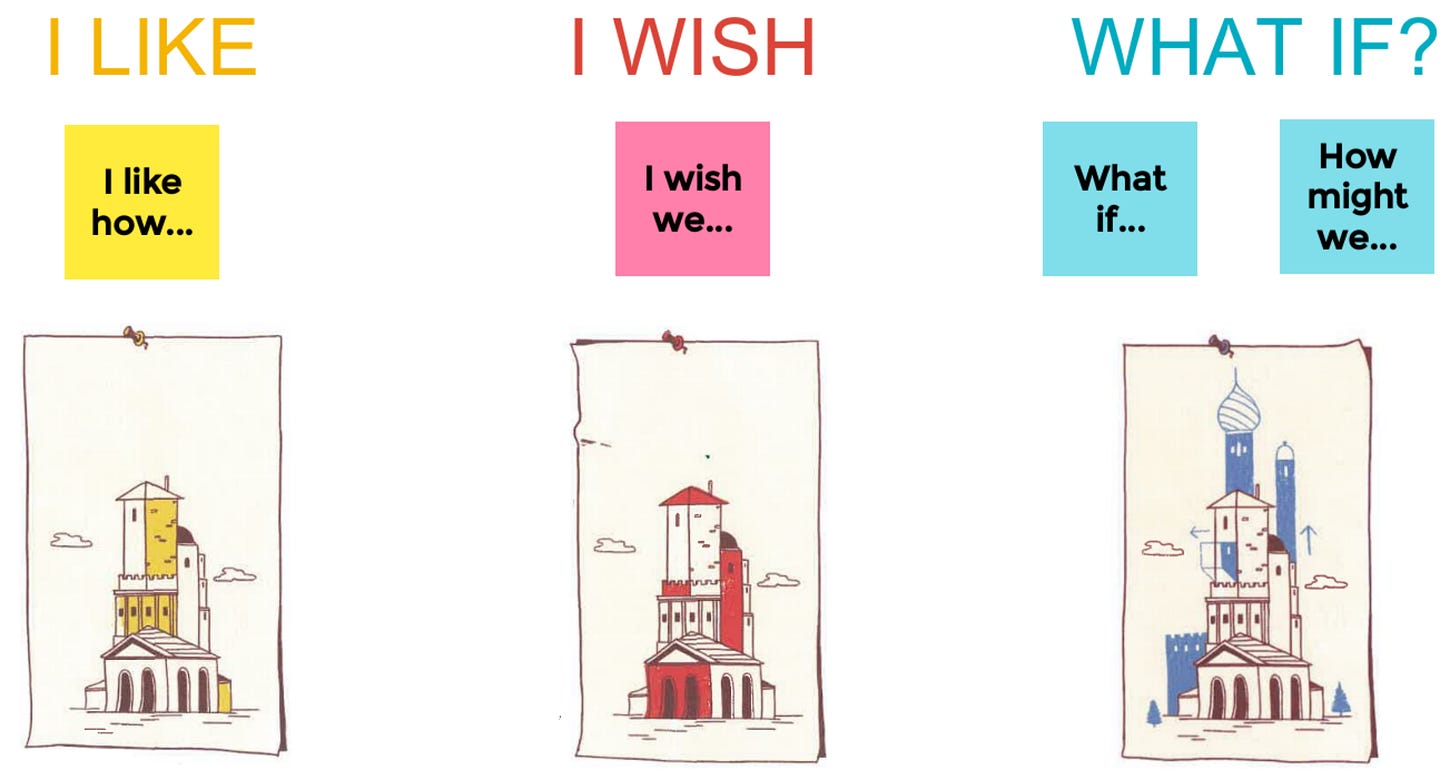
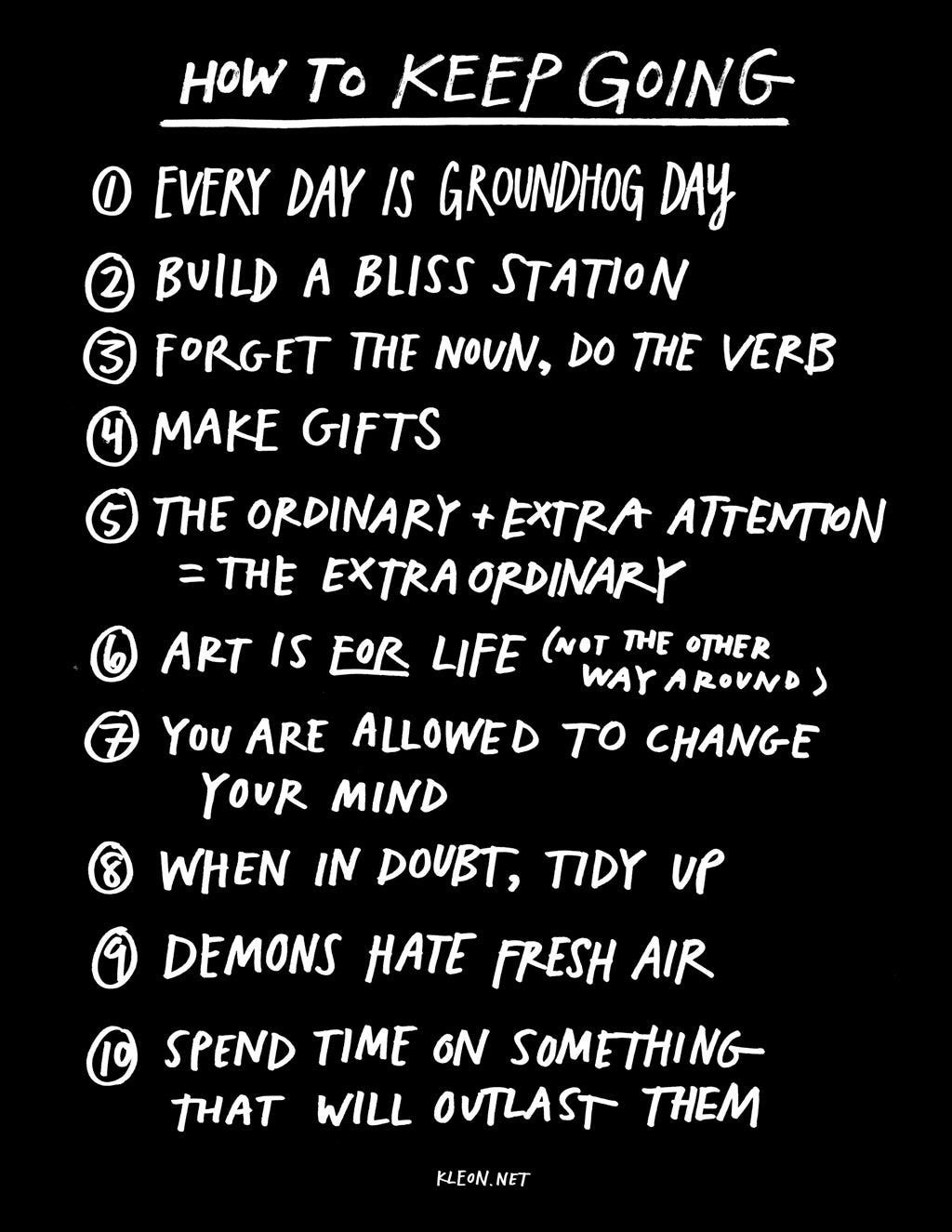
I am thankful that Austin Kleon included a link to this post. It so took me back to those weeks before the holidays when I was teaching (I retired after 36 years in elementary, mostly Gr. 3) You made me miss those special times with students, sharing our room, our thoughts, our books. I've read most of Kleon's books and marvel at his wisdom. Another book I found that changed my teaching was "The Book Whisperer" by Donalyn Miller. I've subscribed and will be anxious to read more of your posts. Thanks for dispelling some of my blues this season.
The number of times I have revisited this post over the past few days!! THANK YOU for this.